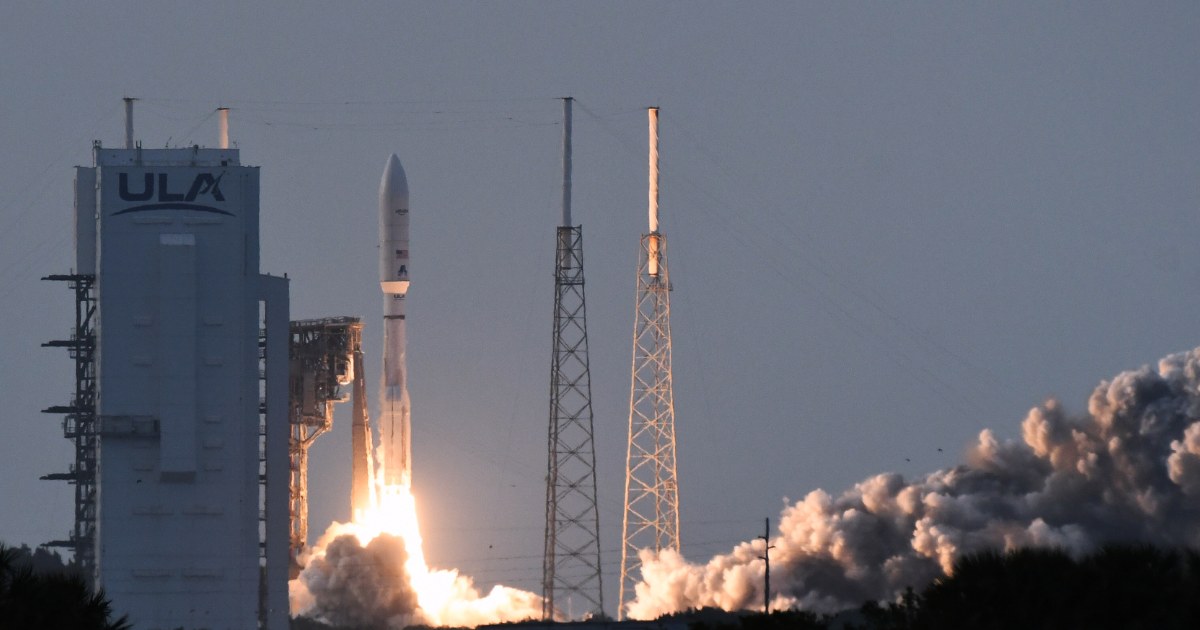Amazon has officially entered the satellite internet race, launching the first batch of its Project Kuiper satellites to compete directly with SpaceX’s Starlink. With 27 satellites now operating in low-Earth orbit, Amazon aims to bring high-speed internet to users globally, marking an important step in the company’s ambitious plans.
Amazon’s Project Kuiper Launch Details
On April 28th, Amazon successfully launched 27 satellites aboard a United Launch Alliance (ULA) Atlas V rocket from Florida’s Cape Canaveral Space Force Station. The launch, initially delayed due to poor weather conditions on April 9th, finally occurred at 7 PM ET, marking a significant milestone for Amazon’s satellite constellation. Project Kuiper intends to deploy over 3,000 satellites, aiming to deliver broadband internet service worldwide, especially in remote and underserved areas.
Understanding Amazon’s Project Kuiper
Project Kuiper, announced in 2019, represents Amazon’s ambitious $10 billion initiative to compete with SpaceX’s Starlink. The project targets low-Earth orbit (LEO) for its satellites to ensure faster internet speeds and lower latency compared to traditional satellite internet. Amazon’s satellites operate at approximately 450 kilometers above Earth, significantly closer than traditional satellites, enhancing their effectiveness in delivering fast and reliable internet connectivity.
The Technology Behind Project Kuiper
Amazon’s satellites feature cutting-edge technology designed to improve internet access. Each satellite includes advanced antennas and networking technologies capable of providing stable internet connections even in remote areas. Amazon confirmed that these initial satellites are fully operational and successfully communicating with ground stations. Project Kuiper’s constellation architecture will allow continuous connectivity, offering speeds competitive with terrestrial broadband services.
How Does Amazon’s Kuiper Compare to Starlink?
Amazon is stepping into a crowded market, heavily dominated by Starlink, which already has over 7,200 satellites in orbit. Starlink’s aggressive expansion includes plans to deploy up to 34,400 satellites. However, Project Kuiper aims to provide strong competition by emphasizing quality service, advanced technology, and potentially more affordable pricing options. The challenge for Amazon lies in rapidly scaling its satellite network while ensuring service quality and managing regulatory requirements.
Future Plans and Timeline for Project Kuiper
Amazon has outlined ambitious goals for Project Kuiper. By mid-2026, Amazon must deploy at least half of its planned constellation, approximately 1,618 satellites, as mandated by the US Federal Communications Commission (FCC). With 80 launches planned to achieve this milestone, Amazon expects to begin offering commercial high-speed internet service later this year, potentially reshaping global internet access, particularly in rural and underserved areas.
The Impact on Global Internet Connectivity
Project Kuiper promises significant advancements in global internet connectivity, particularly in regions lacking robust internet infrastructure. By offering high-speed, low-latency internet via satellites, Amazon aims to bridge the digital divide. Enhanced global connectivity could foster economic growth, improve educational opportunities, and provide essential services to remote communities worldwide, demonstrating the transformative potential of satellite internet technologies.
Frequently Asked Questions (FAQs)
What is Amazon’s Project Kuiper?
Project Kuiper is Amazon’s satellite internet initiative, aiming to deploy over 3,000 satellites into low-Earth orbit to provide high-speed internet globally.
When did Amazon launch its first satellites?
Amazon launched its first 27 Kuiper satellites on April 28th, 2025, from Cape Canaveral Space Force Station in Florida.
How does Project Kuiper differ from Starlink?
Project Kuiper aims to compete with Starlink by providing similarly high-speed, low-latency internet access but potentially at competitive prices and with unique technological innovations.
What are the benefits of satellite internet?
Satellite internet provides connectivity in remote areas, offering reliable internet service without the need for extensive ground infrastructure.
What is the timeline for Amazon’s Project Kuiper?
Amazon plans to have half of its satellite constellation in orbit by mid-2026, with commercial internet service expected to start later this year.
What impact will Project Kuiper have?
Project Kuiper aims to significantly improve global internet access, particularly benefiting underserved and rural communities worldwide.



















